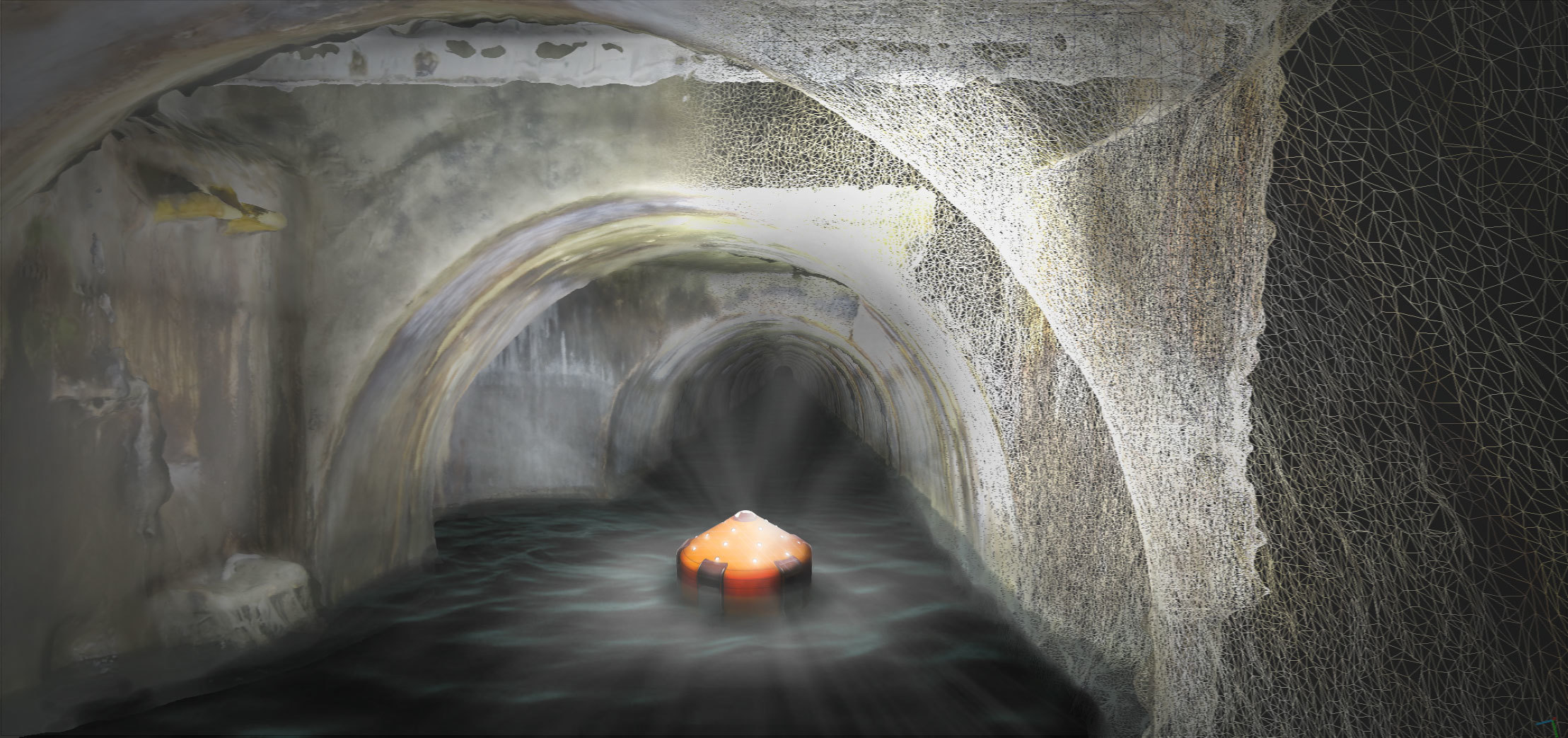Interested in Inspection?
Get Inspection articles, news and videos right in your inbox! Sign up now.
Inspection + Get AlertsNo one would argue that sewer inspections can be a dirty — and dangerous — job for workers. An Australian company is hoping to help with that aspect of it and still ensure quality inspections of sewers while keeping people out of them.
GeoInteractive was recently announced as one of seven companies that will be participating in the 2018 Pipeline H2O class, an Ohio-based water technology commercialization program in its second year that assists start-ups with developing, commercializing, and funding their inventions and processes. The program kicked off this month. The Australian-based GeoInteractive, which has seven employees, is focusing on its SewerScout product (a 3-D mapping drone) and online cloud-based platform that allows users to view, inspect and report on sewers from their off-site offices. GeoInteractive is also working on machine learning to assist with the condition inspection process.
“After many miles of walking through waist deep of stinking sewage, I came up with the idea of floating the 3-D mapping technology through the sewer instead of me carrying it all,” says Robert Lee, CEO of GeoInteractive. “Sewers being so large, gravity fed and relatively free of obstructions, this would be an ideal way to inspect a sewer.”
SewerScout is still in its pilot/prototype stage.
“We are currently organizing to test our latest iteration with several utilities in the U.S. and back home in Australia over the next 12 months,” Lee says. “We plan to have the commercial unit ready in early 2019.”
GeoInteractive has been refining the 3-D technology for the sewer’s harsh and difficult environments by testing different iterations of it with Sydney Water, the largest utility in Australia.
“We initially strapped the 3-D mapping system to my chest, and then I walked through sewer as small as 4.2 feet in height to as large as 11.5 feet,” Lee says. “On several occasions, we have been evacuated during our mapping run due to dangerous circumstances.”
That launched the idea of a floating robot instead. The SewerScout was born.
The SewerScout has been beta tested in Sydney sewers that have been difficult for workers to inspect in person or using CCTV systems.
“Just recently, we inspected a sewer that hadn’t been inspected since the 1980s due to its small size,” Lee says. “We mapped close to a mile in less than 25 minutes and now look to map similar sewers in the Sydney region.”

A concept rendering of the SewerScout is shown in the type of 3-D reconstruction of the sewer environment that the mapping technology produces.
Launching a Technology
Lee founded GeoInteractive in 2013 using drones to survey coal stockpiles.
“At the same time, I was working on interactive Google street-view style of technology for mining environments,” he says.
Then Lee met someone in the water industry who joked that he should try the technology in a sewer.
“The rest is history,” Lee says.
Last year, GeoInteractive participated in Australia’s largest tech accelerator program.
“The program assisted us in becoming global from the beginning,” Lee says. “In doing so, I traveled to the U.S. twice last year getting exposed to the water industry and overall business environment."
It was during those trips that he learned about Pipeline H2O. But Lee says he was initially hesitant to apply for the Pipeline program because of the costly travel to the U.S. from Australia.
“But thinking more about the program, it made sense to participate in a face-to-face program, and to set up a base close to Chicago and Washington, D.C.,” he says.
Lee says he is confident about his company’s product because of the way the sewer industry is recognizing technology as the way forward in improving asset management.
“Our goals for Pipeline H2O are to get assistance in commercialization, introductions into the U.S. water industry and also the investor network,” Lee says, adding that he has been working to organize a pilot program with the Metropolitan Water Reclamation District (MWRD) in Chicago.
He is also waiting to hear back from some of the largest utilities on the East and West Coasts.
“We have 300 plus wastewater utilities in our sights just in the U.S. alone, with ranging amounts of sewer sizes to inspect,” Lee says.
His hope is to also collaborate with engineering firms contracted by utilities. The goal is to have the SewerScout system commercialized by 2019.
“In the next year, we plan to commercialize the SewerScout for large critical sewers, find financial backing to scale and get U.S. and European or Asian adoption,” Lee says.
While going underground is one of Lee’s short-term goals with his 3-D mapping technology, he’s shooting a bit higher — and way above ground — for long-term implementation.
“My ultimate goal is to get our technology exploring the caves and tunnels on the moon or Mars in the hope of finding evidence of past life,” he says. “One day, I would like our mapping bots strapped to a SpaceX rocket making its way to Mars. But first, we will explore all the sewer tunnels in the world.”






